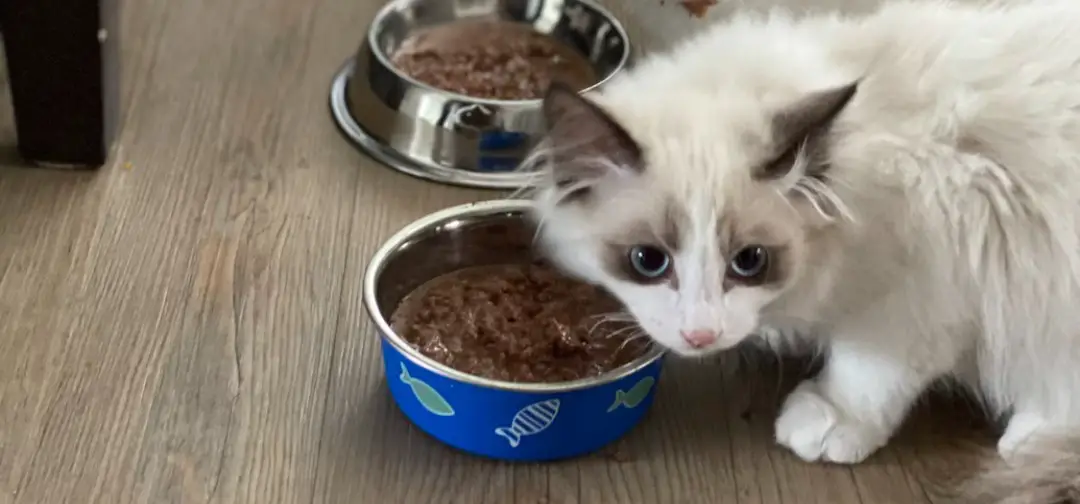Is your feline friend turning up their whiskers at their current cuisine? It’s time to spice things up and switch their cat food with flair!
In this guide, we’ll navigate the world of cat food transitions, unveiling the secrets to a seamless switch that will have your kitty purring for more.
Get ready to tantalize their taste buds and transform their mealtime experience!
Let’s get started with how to switch your cat food…
How Do You Switch Your Cat Food
In my opinion, it can be a little challenging to switch your cat’s diet, but if you take the appropriate steps, you and your cat can go through the adjustment with ease and harmony.
Since cats are habitual eaters, it’s important to introduce new food gradually to prevent upset stomachs or outright rejection.
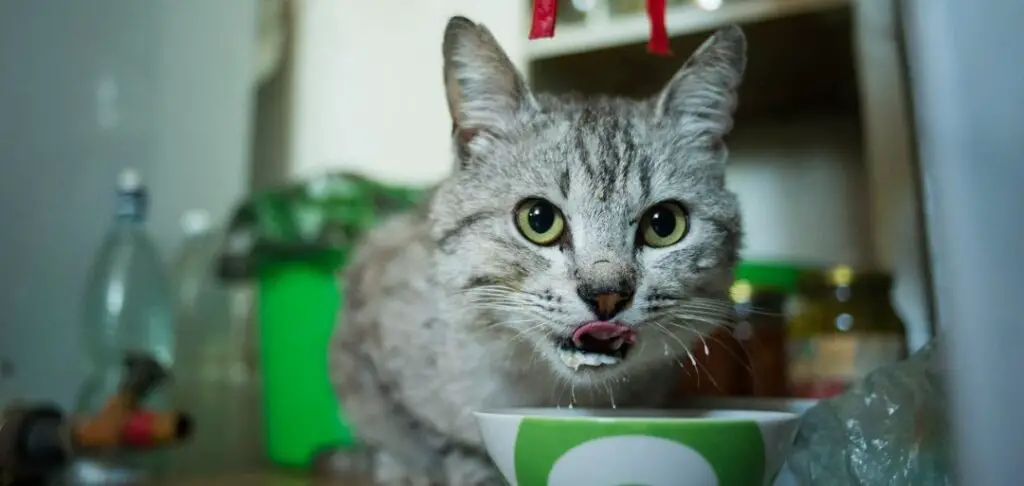
You can use the following step-by-step guide to assist you make the switch:
Step 1: Assess Your Cat’s Current Diet
From what I know about switching cat food, the first thing you need to do is to examine everything your cat is eating as of the time of switching.
You need to think about things like your cat’s age, weight, level of exercise, and any particular health issues they might be experiencing.
For example, older cats might benefit from a diet designed specifically for their needs, while cats who are overweight might need a weight-management plan.
Knowing the specific nutritional needs of your cat can help you choose the right new food, you can also make inquiries before switching.
Step 2: Research and Select a Suitable New Cat Food
Quality counts when selecting new cat food, so spend time learning about various cat food brands and closely reading the labels.
Cats are obligate carnivores and need a diet high in protein, so I advise you to look for products that contain actual meat as the first component.
You should also stay away from foods that include artificial additives, fillers, or too many carbohydrates.
Additionally, to reduce stomach distress during the switch, choose a recipe that closely resembles the nutritional makeup of your cat’s existing meal.
Think about things like your cat’s age, activity level, and any dietary restrictions or medical issues they could have when making any switch.
Step 3: Introduce the New Food Gradually
It is imperative, in my opinion, to gradually switch your cat’s food in order to avoid upset stomachs and unwillingness to eat.
I suggest you initially aim for a ratio of roughly 10% new food to 90% old food. Start by combining a small bit of the new meal with their current food.
Reduce the amount of old food and gradually raise the proportion of fresh food over a period of 7–10 days.
Keep in mind that gradual transition facilitates a gradual adaptation of your cat’s digestive system to the new diet.
Step 4: Increase the Proportion of New Food
As your cat adjusts to the new food, continue to increase the ratio of the new food to the old food.
After a few days of the initial 75:25 ratio, progress to a 50:50 ratio, followed by a 25:75 ratio.
Finally, aim for a complete transition to the new cat food.
This gradual approach allows your cat’s digestive system to adapt gradually and reduces the likelihood of gastrointestinal upset.
Step 5: Monitor Your Cat’s Response to The New Food
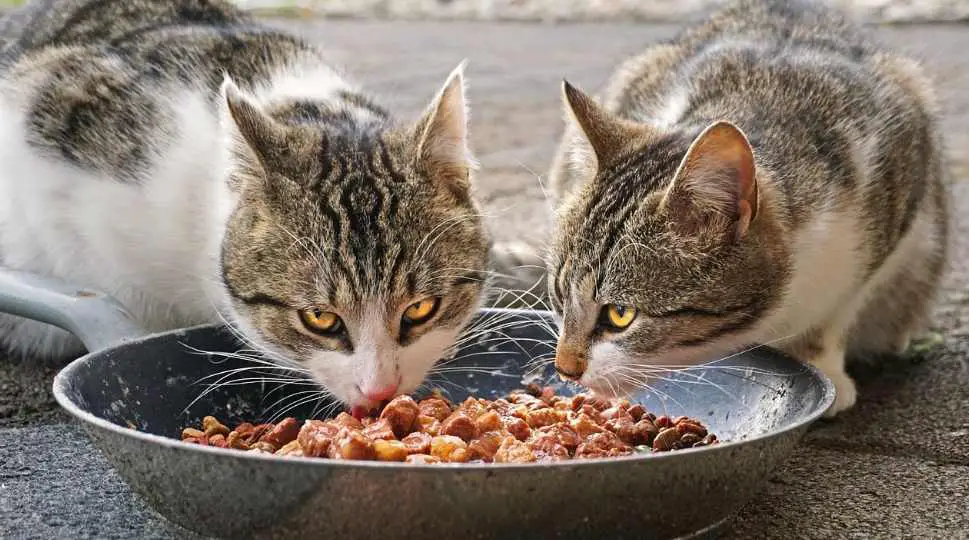
Keep a careful eye out for any indications of stomach distress or unfavorable reactions in your cat during the transition period.
Vomiting, diarrhea, fatigue, or changes in appetite are typical symptoms during transition.
If you have any of these symptoms, you should slow down the transition and think about getting advice from your veterinarian.
They can provide you with guidance that is specific to your cat’s needs.
Step 6: Maintain a Consistent Feeding Schedule
Because cats are creatures of habit, I recommend you keep up a steady feeding schedule when things are changing.
Give your cat a quiet and peaceful eating space and feed them at the same time every day.
Your cat’s transition to a new diet can be facilitated by following this pattern, which can help reduce any disturbances.
Step 7: Encourage Acceptance of the New Food
Sometimes cats could be reluctant to try new food, particularly if they have a preference for a specific brand or taste.
Consider reheating the new dish just a little bit before serving to improve its scent and promote acceptance.
To get your cat to eat, you can also try adding a tiny bit of a yummy topping, like chicken broth or tuna juice.
As your cat gets used to the new food, gradually cut back on the amount of topping.
Step 8: Provide Plenty of Fresh Water During the Transition
All through the transition period, make sure your cat always has access to fresh, clean water.
This is critical for their general well-being and digestive system, particularly during this phase of change.
Dry food causes cats to drink more water, so it’s critical to promote enough hydration by setting up several water bowls throughout the house and changing the water frequently.
Step 9: Gradually Phase Out the Old Food
Continue to progressively reduce the amount of the old food and increase the amount of the new food as your cat gets used to the new diet.
Over the course of an additional 7–10 days, try to switch to a full portion of the new diet.
This methodical phase-out of the old food helps avoid making abrupt dietary changes that can irritate the digestive system.
After your cat has made the switch and is eating only the new food, keep an eye on their health and well-being.
Observe for enhancements in their overall vitality, energy levels, and coat condition.
Don’t forget to see your veterinarian for more advice if you have any worries or observe any changes in their behavior or health.
Related: Is it ok if my cat eats only dry food?
Signs Your Cat is Not Accepting the New Food When Switching Food
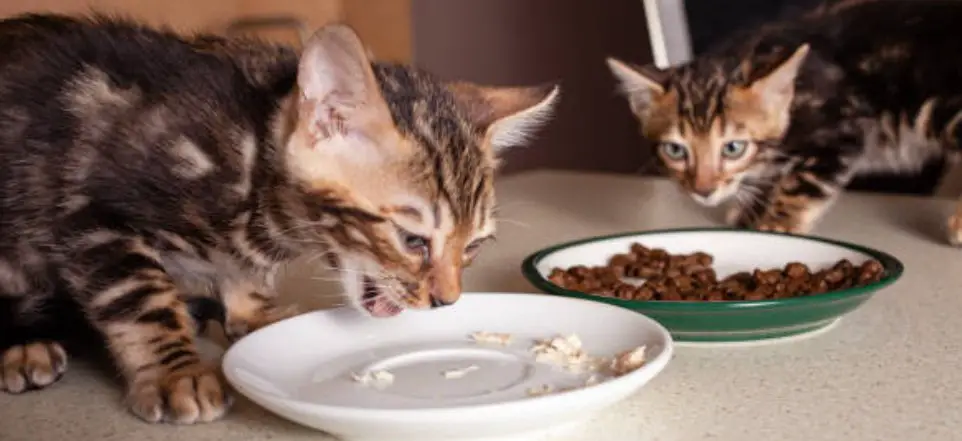
It’s critical to observe your pet’s reaction when you introduce new cat food to them. These are some typical indicators that your cat might not be taking to the new food.
First of all, your cat may be expressing disinterest if they merely nibble at the new food or refuse to eat it altogether.
Additionally, the new food could not be agreeing with your cat’s system if they have digestive problems like vomiting, diarrhea, or a lot of gas after eating it.
Moreover, lethargy, weight loss, or an abrupt drop in appetite could indicate that your cat is rejecting the new diet.
Lastly, if your cat becomes irritable or displays unusual behavior after the food switch, it may be worth considering a different option.
Signs Your Cat is Accepting the New Food When Switching Food

It’s important to keep an eye out for indications that your cat is adjusting to a new brand or formula when you replace their food.
A willingness to approach and sample the new meal is one typical sign. Watch for signs of interest from your cat, such as sniffing or even licking the new food.
A good indicator is also if your cat keeps eating the new food across several feeding sessions.
Finally, pay attention to your cat’s behavior and general health. If they continue to have a steady level of activity and keep a healthy weight, this is a positive indication that they are adjusting to the new food.
Precautions to Take When Switching Your Cat Food
It’s necessary to follow certain guidelines when switching your cat from one brand of food to another in order to guarantee a seamless and effective transition.
First of all, it’s best to introduce the new food gradually over a few days, combining it with the old.
This lessens the possibility of a tummy upset by allowing your cat’s digestive system to adjust gradually.
Secondly, throughout the transition phase, pay special attention to your cat’s behavior, appetite, and stools.
Keep an eye out for any indications of allergies or digestive problems, and contact your veterinarian if necessary.
Finally, to create a habit and promote adoption, feed the new food at regular mealtimes and supply an ample amount of fresh water.
What to Do if Your Cat is Not Accepting the New Food
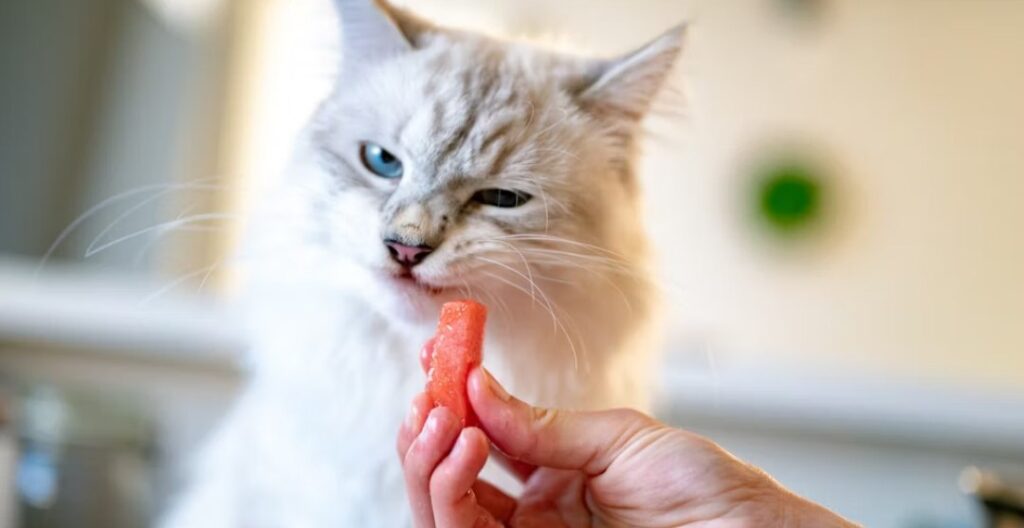
Your cat may occasionally object when you introduce them to a new food.
There are several actions you can take to facilitate the switch if your cat is not taking to the new diet.
First, try progressively increasing the ratio over time by combining a small portion of the new meal with their existing food.
Additionally, since the new food’s aroma can be more alluring, think about warming it just a little bit.
It could take your cat a few days to get used to the new taste and texture, so patience is essential.
Lastly, try speaking with your veterinarian for more advice and to rule out any underlying health concerns if your cat still refuses to eat the new food.
Conclusion
With these simple steps and a little patience, you can successfully transition your cat’s food and keep their taste buds satisfied. Remember, a gradual change, enticing flavors, and monitoring their well-being are key to a smooth transition. So go ahead, switch up their cat food, and watch your furry friend thrive with a happy and healthy appetite!
Related Questions
Let’s answer some related questions:
How do you switch your cat’s food?
Switching your cat’s food should be done gradually to avoid digestive upset. Start by mixing a small amount of the new food with the current food, and gradually increase the proportion of the new food over a period of 7–10 days. Monitor your cat’s appetite and overall health during the transition.
Why is it important to switch cat food gradually?
Switching cat food gradually helps prevent digestive upset and allows your cat’s digestive system to adjust to the new food. Sudden changes in diet can lead to diarrhea, vomiting, and other gastrointestinal issues. Gradual transitions also give you an opportunity to monitor your cat’s response to the new food and make adjustments if necessary.
How long should I take to switch my cat’s food?
It is recommended to take 7–10 days to switch your cat’s food gradually. This allows your cat’s digestive system to adapt to the new food without causing any digestive upset. Monitor your cat’s response to the transition and consult with your veterinarian if you have any concerns or if your cat experiences any adverse reactions.
What should I do if my cat refuses to eat the new food during the transition?
If your cat refuses to eat the new food during the transition, try mixing in a small amount of highly palatable wet food or a food topper to entice your cat to eat. You can also try warming up the food slightly or offering it at room temperature. If your cat continues to refuse the new food, consult with your veterinarian for further guidance.

